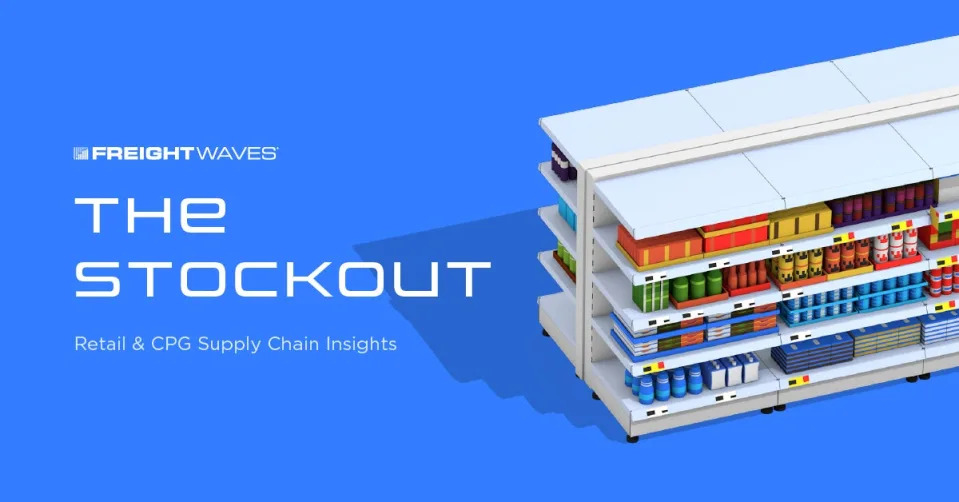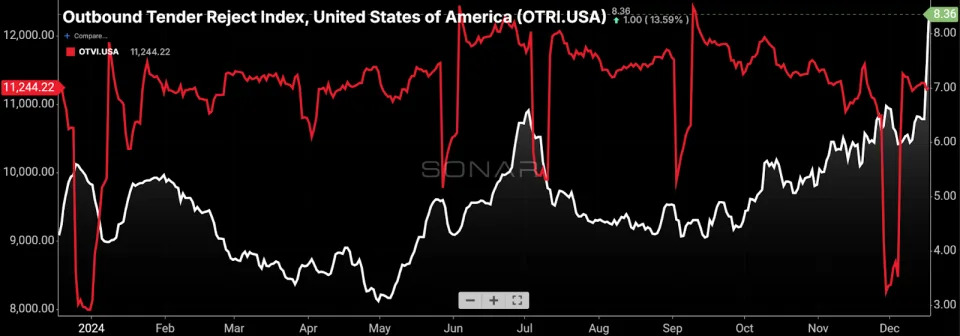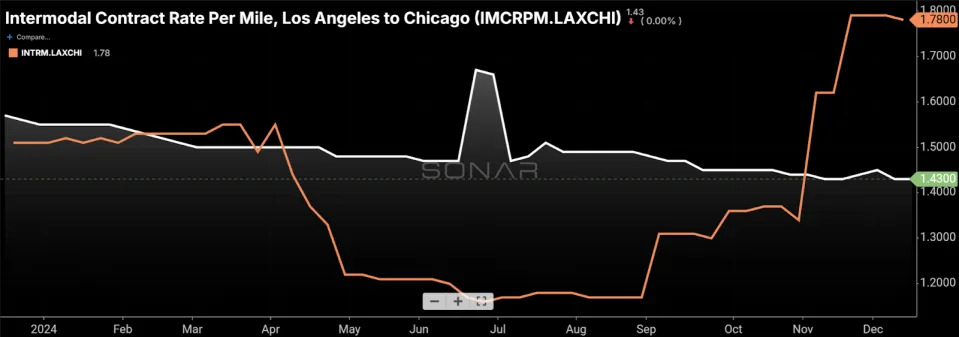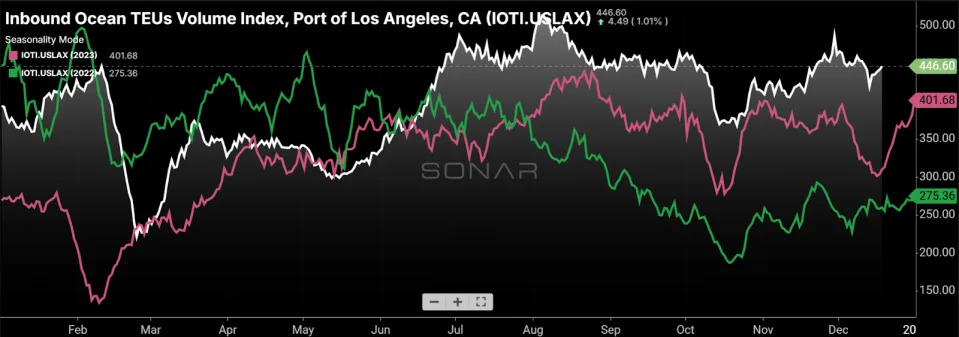Freight market shows additional signs of recovery

Tender rejection rate rises as holidays approach

The tender rejection rate has risen steadily since early October despite tender volume declining. That implies that capacity is leaving the market, which is leading to a tighter freight market. (Chart: SONAR )
Both truckload spot rates and tender rejection rates are indicating that the freight market is tightening. The tender rejection rate has risen to its highest level since the first half of 2022 with a bounce that appears to be driven by more than seasonality. At the same time, the volume metrics in SONAR , such as the Outbound Tender Volume Index , are below year-ago levels. (Growth in private fleets could be contributing to a decline in tenders to for-hire carriers.) The implication is that the evidence of a move toward a tighter market has been driven by capacity exits. That’s important because capacity hanging on too long is what kept the freight market in recession for a duration that was abnormally long.
As a result, shippers should take a risk-mitigating approach to sourcing capacity for the upcoming year since they could experience challenges in sourcing capacity next year that they have not had to deal with the past two-and-a-half. Shippers should lock in contract rates, even at higher levels, to secure capacity. At this point, chasing the lowest possible rate could easily lead to service failures next year.
For additional detail, see FreightWaves articles here and here .
Intermodal spot rates shoot ahead of contracts in densest lane

(Chart: SONAR )
At our conference last month, we launched a new set of intermodal contract rates in SONAR which cover 67 lanes and can be found using the IMCRPM tickers. That adds to an existing dataset for intermodal spot rates found under the INTRM tickers. Both datasets include fuel surcharges, and the spot rate datasets include the application of any peak season surcharges.
Comparing the two datasets highlights whether carriers are willing to accept incremental intermodal loads at reasonable rates or prefer to reserve capacity for contractual shippers because it may be getting scarce. For the first 10 months of this year, intermodal spot rates from LA to Chicago were below, or roughly equal to, intermodal contract rates in the same lane. That changed starting in early November as it became clearer that import volume was going to continue to feed the intermodal network more than what is typical seasonally.
As shown above, intermodal spot and contract rates in the lane, including fuel, are $1.78 per mile and $1.43 per mile, respectively. Those rates still are well below the dry van highway rates in the lane; per SONAR Market Dashboard , the spot and contract rates in the lane are $2.38 a mile and $2.16 a mile, respectively.

Record-breaking demand to move containers through the Port of LA has contributed to intermodal volume growth. The port expects another record in December and points to a 13% increase in empty containers in vessels leaving the port as evidence that import volume will remain strong. (Chart: SONAR )
The Stockout show: Software to help SMBs level the playing field

(Image: FWTV)
On Monday’s The Stockout show, Grace Sharkey and I discussed the termination of the proposed Kroger-Albertsons merger, evidence of the freight market tightening and C.H. Robinson’s investor day.
In addition, the hosts interviewed Ara Ohanian, CEO of Netstock, a company that produces supply and demand software for small and medium-size shippers. Netstock’s goal is to help smaller shippers punch above their weight class by leveraging software that would otherwise be hamstrung by not having an internal team of data analysts and logisticians. The software looks ahead 365 days, which is critical when exogenous events, such as tariffs, the Red Sea attacks and the International Longshoremen’s Association strike, change lead times throughout the supply chain. Ohanian is seeing many of his customers make supply chain revisions to nearshore in anticipation of tariffs but warns that shifting suppliers to ones with less experience and scale comes with its own risks.
See Monday’s show
here
and see the full The Stockout playlist
here
.
The post Freight market shows additional signs of recovery appeared first on FreightWaves .

